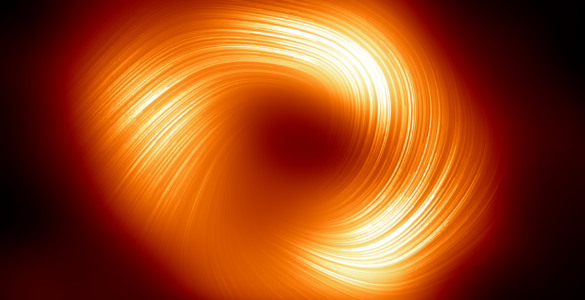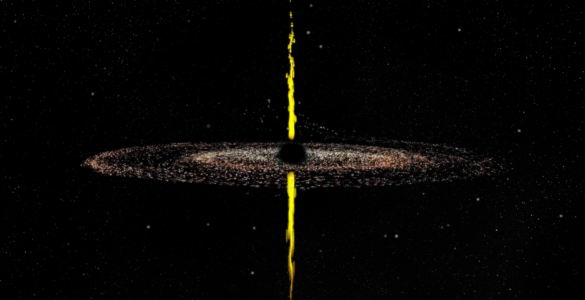Latest NRAO News
News is managed by NRAO News & Public Information. Questions about News? Have a story to share? Want to interview a scientist or create new media about our telescopes?

The U.S. National Science Foundation National Radio Astronomy Observatory (NSF NRAO) and Associated Universities, Inc. (AUI) are proud to celebrate the remarkable achievements of two local students, Iris and Camila, as they embark on their journeys into STEM (Science, Technology, Engineering, and Mathematics) careers.

Astronomers have discovered the secrets of a starburst galaxy producing new stars at a rate much faster than our…

The Event Horizon Telescope (EHT) collaboration has observed spirals of light escaping from the edge of the supermassive black…

Compact Symmetric Objects (CSOs) have long puzzled astronomers with their unique characteristics. These active galaxies harbor supermassive black holes that emit powerful jets traveling at near-light speeds in opposite directions. However, unlike their counterparts in other galaxies, these jets remain compact, not extending out to great distances as expected. For decades, scientists presumed that CSOs were youthful entities, with their jets destined to expand over time. New findings, published in three papers in The Astrophysical Journal, challenge this notion.

NRAO and SpaceX have engaged in coordinated experiments involving NRAO telescopes and the Starlink satellite constellation for over two years. Early experiments began in late 2021 with the deployment of working Starlink user terminals near the Jansky Very Large Array (VLA) in New Mexico and have continued to the present day. These experiments highlight the ways in which satellite constellations and radio telescopes might be able to coexist, provided there is mutual awareness of what the other is doing.

The National Radio Astronomy Observatory (NRAO) marked its presence for the third consecutive year at the prestigious New Mexico Governor’s STEM Challenge





